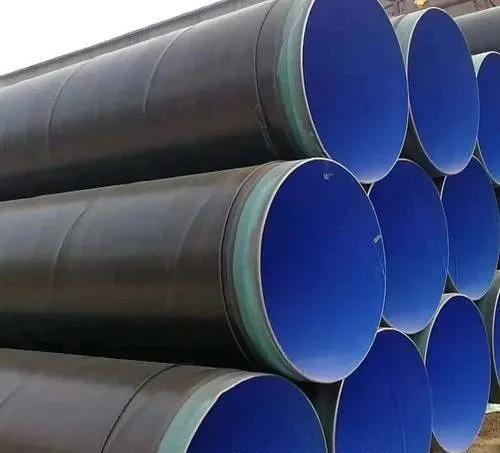Application Scope Of 3PE Anti-corrosion Steel ipe For Drinking Water
The function of the pipeline is mainly to transport liquids or other solids. It can be said to be the most commonly used equipment in our lives. 3 treatment methods for pipeline anti-corrosion.
1. What are the treatment methods for pipeline anti-corrosion?
1. Pipeline external anti-corrosion design Petroleum asphalt is the oldest pipeline anti-corrosion layer, which is well used in most dry areas. At present, epoxy coal tar, zinc-rich coatings, etc. have replaced petroleum asphalt as anti-corrosion coatings for steel water pipelines, and epoxy coal tar series coatings have excellent anti-corrosion performance and low prices.
2. The anti-corrosion coating on the outer wall of the pipeline is evenly and densely applied on the surface of the rust-removed metal pipeline to isolate it from various corrosive media. It is one of the most basic methods for pipeline anti-corrosion. Since the 1970s, laying pipelines in harsh environments such as polar regions and oceans, and heating and transporting oil products to increase the temperature of the pipeline, have put forward more requirements on the performance of the coating.
3. Pipeline inner wall anti-corrosion coating Surface treatment of the inner wall of the pipe can ensure that the coating is firmly bonded to the pipe wall. Since the 1970s, the trend has been to use the same material for the inner and outer wall coatings of the pipe so that the inner and outer wall coatings can be carried out simultaneously. Before the pipeline is treated for corrosion, the surface of the pipeline substrate must be treated to remove moisture, oil, dirt, pollutants, rust and scale on the surface of the substrate. There are many methods for surface treatment, and manual rust removal, sandblasting or chemical rust removal are generally used. When removing rust manually, the quality standard should reach St3 level; when sandblasting or chemical rust removal, the quality standard should reach Sa2.5 level, and the surface roughness of 30 to 50µm is more appropriate. The treated surface should be primed within 4 hours.
2. What is the role of pipeline anti-corrosion?
1. Prevent the pipeline from being corroded by soil, air, medium, etc. Nowadays, pipelines are mostly used to transport gasoline, natural gas and other substances. These substances have a very large corrosive effect on the soil of the environment, and pipelines can effectively prevent the environment from being polluted by these substances, and greatly improve the transportation efficiency.
2. Pipeline anti-corrosion can prevent the leakage of natural gas, oil, etc., and has a very good protection and prevention effect on fire and the environment.
3. What are the precautions during pipeline anti-corrosion construction?
1. The ambient temperature should be higher than 5℃ and the air humidity should be lower than 80% during the construction of the anti-corrosion layer.
2. The diluent ratio is 5%, the glass cloth is pressed 20-25mm, and the overlap length of the cloth head is 100-150mm.
3. Anti-corrosion layer voltage inspection: ordinary level 2000V; reinforced level 2500V; extra reinforced level 3000V.
4. Anti-corrosion layer inspection: every 10km leakage point ≯5, use a low-voltage audio signal leak detector to measure.


اترك رداً
تريد المشاركة في هذا النقاششارك إن أردت
Feel free to contribute!